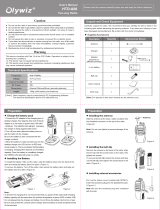
i
SP3515 VHF
Document number: TT 98-124293-E
Release date: October, 2007
Copyright: © 2007 Thrane & Thrane A/S. All rights reserved.
Trademark Acknowledgements
• SAILOR is a registered trademark of Thrane & Thrane A/S.
• Other product and company names mentioned in this manual may be
trademarks or trade names of their respective owners.
Warranty limitation
IMPORTANT - The radio is a sealed waterproof unit. To create and maintain its
waterproof integrity it was assembled in a controlled environment using special
equipment. The radio is not a user maintainable unit, and under no circumstances
should the unit be opened except by authorized personnel. Unauthorized opening
of the unit will invalidate the warranty.
Disclaimer
Any responsibility or liability for loss or damage in connection with the use of this
product and the accompanying documentation is disclaimed by Thrane & Thrane.
The information in this manual is provided for information purposes only, is
subject to change without notice, may contain errors or inaccuracies, and
represents no commitment whatsoever by Thrane & Thrane. This agreement is
governed by the laws of Denmark.
Manuals issued by Thrane & Thrane are periodically revised and updated. Anyone
relying on this information should satisfy himself/herself as to the most current
version. Providers with access to Thrane & Thrane's Extranet may obtain current
copies of manuals at: http://extranet.thrane.com
Thrane & Thrane is not responsible for the content or accuracy of any translations
or reproductions, in whole or in part, of this manual from any other source.
0740




















